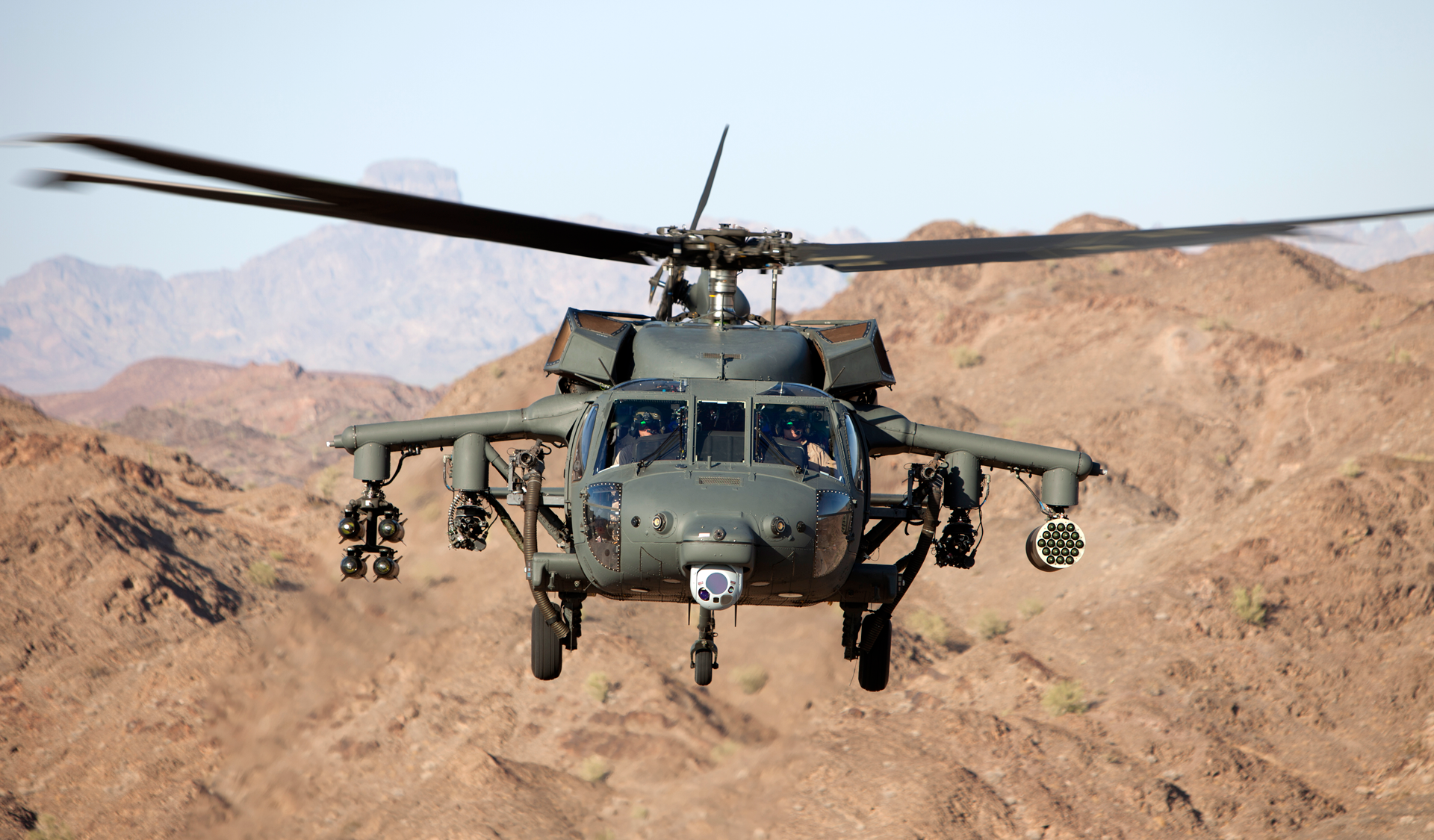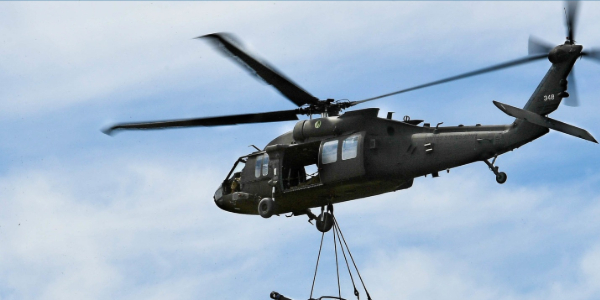Explore the Advanced Security Characteristics and Redundancies of the Blackhawk Helicopter
Explore the Advanced Security Characteristics and Redundancies of the Blackhawk Helicopter
Blog Article
Revealing the Power and Adaptability of the Blackhawk Helicopter
The Blackhawk helicopter stands as a testament to design excellence and military advancement, considerably shaping the landscape of contemporary airborne procedures. As we explore its history and operational abilities, one should take into consideration how the Blackhawk continues to influence modern battle techniques and humanitarian initiatives alike.
History of the Blackhawk
The background of the Blackhawk helicopter is noted by considerable technological advancements and a tactical evolution in armed forces air travel. Developed in the late 1960s by Sikorsky Aircraft, the UH-60 Blackhawk was originally conceived to change the older UH-1 Iroquois, frequently understood as the "Huey." The Blackhawk's first trip took place in 1974, and it was formally introduced to the U.S. Military in 1979.


This aircraft was designed to fulfill the demanding demands of modern-day warfare, concentrating on adaptability, resilience, and speed (Blackhawk Helicopter). Its capacity to operate in numerous environments, paired with sophisticated avionics and style functions, quickly developed the Blackhawk as an important property for army operations worldwide
Throughout the 1980s and 1990s, the Blackhawk saw extensive use in different problems, consisting of the Gulf Battle and humanitarian goals. The helicopter's adaptability permitted it to offer multiple roles, from troop transportation to medevac and logistical assistance. As modern technology evolved, so did the Blackhawk, causing numerous variations that dealt with particular mission needs. Today, the Blackhawk stays a famous symbol of army aeronautics, constantly fine-tuned to satisfy modern difficulties.
Trick Attributes and Specifications
Blackhawk helicopters are renowned for their design quality and operational adaptability, boasting a variety of vital functions and requirements that boost their performance in numerous armed forces functions. Among the most substantial qualities is their dual-engine arrangement, generally powered by the T700-GE-701C engines, which give extraordinary dependability and performance. The helicopter has an optimum cruise ship rate of around 150 knots and a solution ceiling of around 20,000 feet, permitting it to operate properly in varied atmospheres.
The Blackhawk's airframe is constructed from innovative composite materials and aluminum alloys, making certain a robust structure while lessening weight. It features a completely verbalized blades system that gives remarkable dexterity and security. The helicopter can accommodate approximately 11 battle soldiers or bring as much as 8,000 pounds of exterior freight, making it very versatile for various goals.
In Addition, the Blackhawk is furnished with innovative avionics and communication systems, improving situational awareness and goal control. Its capacity to operate in negative weather condition problems, integrated with its reduced acoustic signature, makes it a sneaky choice for tactical operations. Overall, these features add to the Blackhawk's track record as a foundation of modern-day military aeronautics.
Versatile Operational Duties
Popular for their engineering quality and progressed capacities, Blackhawk helicopters serve a wide variety of operational roles within military frameworks. Originally developed for troop transportation, their versatility has increased, permitting them to execute different missions successfully.
Among the key duties of the Blackhawk is as an utility helicopter, helping with logistical support by transporting products and workers to and from remote areas. In addition, they master clinical discharge (MEDEVAC) procedures, outfitted with sophisticated clinical equipment and employees to offer important care in the field.
In published here battle circumstances, Blackhawks can run as armed companion systems, supporting ground forces by engaging opponent possessions while making certain army safety and security. Their capacity for unique procedures makes them important; they can perform reconnaissance missions, personnel recuperation, and direct activity raids, typically in high-threat settings.
Moreover, the Blackhawk's adaptability permits it to support humanitarian objectives and disaster response initiatives, supplying help and essential services in times of situation. This broad spectrum of operational functions shows the Blackhawk helicopter's exceptional adaptability, declaring its standing as an essential possession in contemporary army browse around these guys operations worldwide.
Technological Innovations
Numerous technical technologies add to the Blackhawk helicopter's extraordinary efficiency and adaptability in varied operational atmospheres. Among one of the most significant advancements is its composite rotor blades, which boost lift and maneuverability while lowering weight and upkeep needs. The rotor system uses sophisticated products that bolster durability and stand up to environmental degradation, making certain trusted procedure in severe conditions.
Additionally, the Blackhawk is geared up with a cutting edge avionics suite that incorporates advanced navigation and interaction systems - Blackhawk Helicopter. This consists of GPS, radar, and multi-function screens that facilitate real-time situational awareness for pilots, adding to mission success under difficult conditions
In addition, the helicopter's fly-by-wire control system enables precise handling and enhanced responsiveness, giving pilots with improved control throughout complicated maneuvers. The incorporation of sophisticated engine technology, such as the T700-GE-701C engine, more boosts efficiency, using raised power output and fuel effectiveness.
Lastly, modular style concepts enable rapid reconfiguration for various missions, from army transport to clinical evacuation, making the Blackhawk a versatile asset in army and humanitarian operations. These technical developments collectively guarantee that the Blackhawk remains a formidable visibility in the skies.
Effect On Modern Warfare

Geared up with innovative avionics and interaction systems, the Blackhawk allows seamless coordination among important site ground and air devices, making certain precise and prompt feedback to dynamic battle circumstances. Its adaptability enables quick implementation in diverse atmospheres, from urban settings to tough terrains, showing the multifaceted nature of contemporary war.
Additionally, the Blackhawk's exceptional rate and dexterity assist in quick insertion and removal of workers, minimizing direct exposure to adversary fire. Its capability to run in hostile conditions, coupled with sophisticated defensive measures, improves survivability and goal success rates.
As modern problems increasingly depend on joint operations and fast response, the Blackhawk helicopter stays at the leading edge of army approach, embodying the evolution of air flexibility and the important role of air power in attaining tactical purposes. Its effect on modern war proceeds to redefine the capacities of armed pressures around the world.

Conclusion
To conclude, the Blackhawk helicopter exemplifies the crossway of innovative design and operational adaptability, strengthening its standing as a foundation of modern armed forces air travel. Its historical relevance, impressive functions, and flexibility throughout different goal profiles highlight its essential role in modern warfare. As technical innovations remain to boost its capabilities, the Blackhawk stays an important property for armed pressures globally, demonstrating exceptional performance in both battle and altruistic operations.
The Blackhawk helicopter stands as a testament to engineering quality and armed forces innovation, considerably shaping the landscape of modern aerial procedures.The background of the Blackhawk helicopter is noted by substantial technological improvements and a critical evolution in army aeronautics.Blackhawk helicopters are renowned for their design excellence and operational adaptability, boasting a range of essential attributes and requirements that boost their performance in various military functions.Numerous technical developments contribute to the Blackhawk helicopter's phenomenal efficiency and adaptability in diverse functional environments.In verdict, the Blackhawk helicopter exhibits the junction of advanced design and functional convenience, strengthening its standing as a keystone of modern army aeronautics.
Report this page